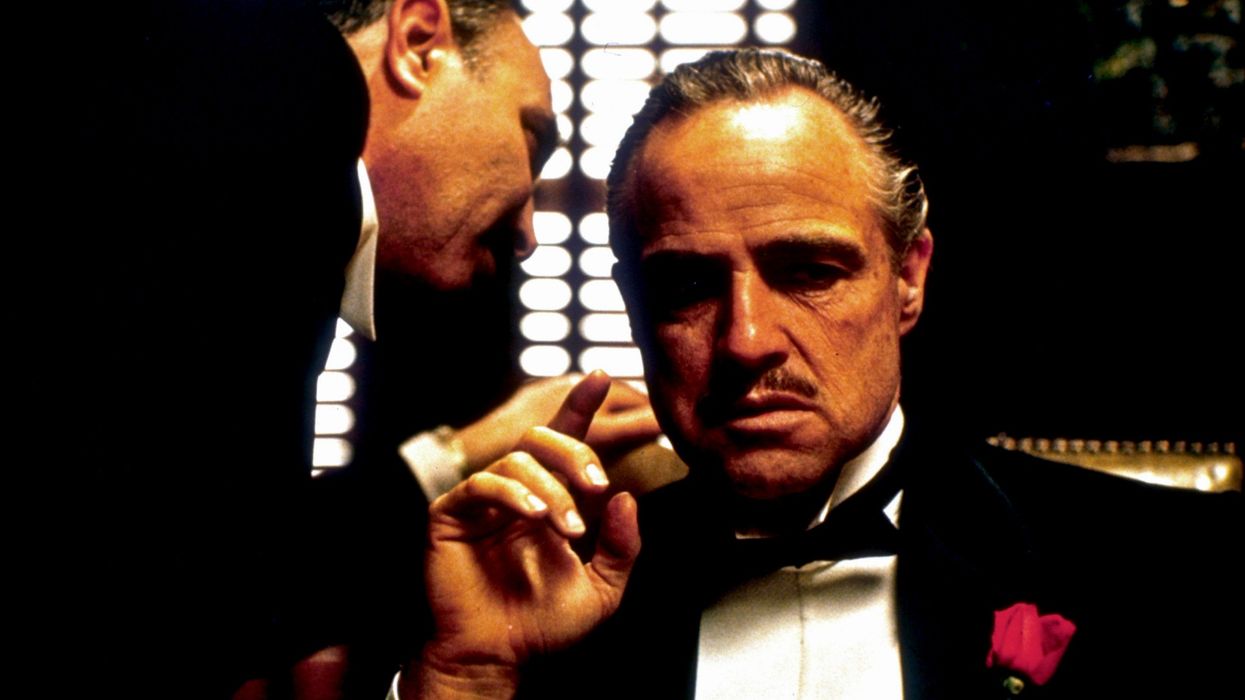Watch: Master Editor Walter Murch's Top 6 Editing Criteria, in His Own Words
When a filmmaking master chooses to divulge their wisdom, it's best that we listen.

The great film editor Walter Murch is responsible for the elegance and effectiveness of films from Apocalypse Now to Jarhead to The Godfather to Cold Mountain. Murch's editing process has already been well-documented in books like In the Blink of an Eye, but in this video by Max Chatfield, we hear Murch himself listing the six virtues that he thinks all editors should care about, illustrated by examples from his impressive body of work.
1. Emotion
Murch feels that the crucial emotions behind a scene should guide the editing, so that whatever cuts you make, however you choose to present characters' faces, gestures, actions, should mirror and intensify the feelings lying beneath the scene's surface. For example, when Michael Corleone's ex-wife Kay visits him visits him in a hospital bed inThe Godfather III, the camerawork must show that the characters maintain an undying partnership, despite whatever happens in the world of organized crime, or their marriage. Thus, Murch edits the scene so that when we see Corleone, he resembles a baby in swaddling clothes, lying ensconced in his bed, while Kay looks down upon him compassionately, illustrating that the former bond they had transcends worldly affairs.
2. Story
This one may seem obvious, but Murch makes the point that the best editors "have some idea of what's going on" in a film, which they then convey to the viewer visually. In the Christmas party scene in Jarhead, in which Jake Gyllenhaal's Anthony Swofford, a soldier in Desert Storm, dances around a tent wearing not much more than a sock, we are forced to make some extrapolations about the time and place of the scene in order to fully enjoy it: it's Christmastime, Swofford is in the Middle East during wartime, it is not entirely clear why anyone's there, and he's feeling anarchic. And so the hand-held quality of the scene contributes to a sense of precariousness. This is important for the story, given that every war story is essentially about some form of precariousness.
3. Rhythm
When editing, you should always be mindful of visual rhythm; each cut you make is a beat in that rhythm, and it ultimately affects how well the story is told. Take, for example, another scene in The Godfather III, in which Michael Corleone is speaking in front of a crowd. We can sense the judgment of Corleone's daughter, from the audience, because Murch keeps cutting from his face to her face; Murch tosses in some other faces as well, all introduced rapid fire, so as to better frame their reactions. The cumulative effect is to make the audience feel the tension in the room when Corleone is speaking; done seamlessly through the attention the editor pays to rhythm.
Murch wants elements such as the setting or the light to be assertive, but not obstructive, within a film.
4. Eye trace
Murch indicates that it's important for editors to think about where viewers' eyes might rest during a scene. He points out a scene during Tomorrowland in which George Clooney's revolutionary drives across the country in a car with two young adults, headed toward an uncertain future. We see Clooney speaking, but the camera is positioned so that we also see his passengers; we end up flitting from one face to another, watching what each face is doing, absorbing different takes on the film's plot, possibly without entirely realizing we are doing so.
5. 180-degree rule
This is essentially an incitement to editors to be aware of the 2-dimensional power of the screen. In other words, simply presenting characters as they are, in the world, with minimal manipulation, can be remarkably effective and can send an emotional message as well as any number of other cinematic techniques. Chatfield directs us to a shot from Apocalypse Now when we simply see two men's bodies and faces, side by side, talking to each other on the boat bearing them into the jungle, and we can savor the beauty of the composition without feeling the need for it to have more depth.
6. 3-D continuity of space
Murch wants editing, at its best, to give us a sense of where characters are in space and time at all points in the story; he wants elements such as the setting or the light to be assertive, but not obstructive, within a film. Chatfield offers us yet another scene from Jarhead in which the camera's cuts, movements, and sheer scope tell us quite a bit about what it might be like for Swofford to be a soldier in the middle of a sweltering Saudi Arabian desert.
Do you ever consider the editing elements above? How do they affect your films? Let us know in the comments.











